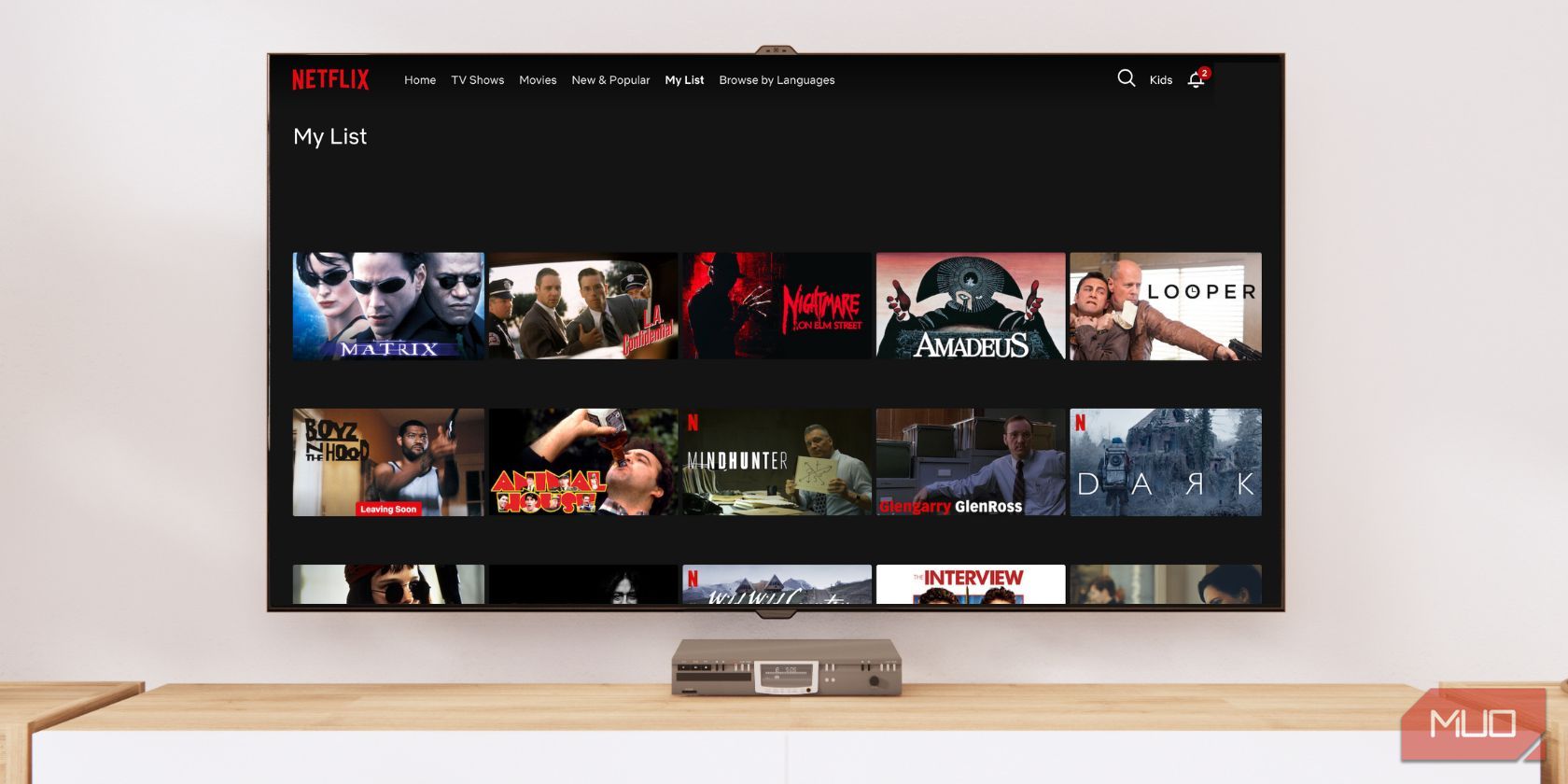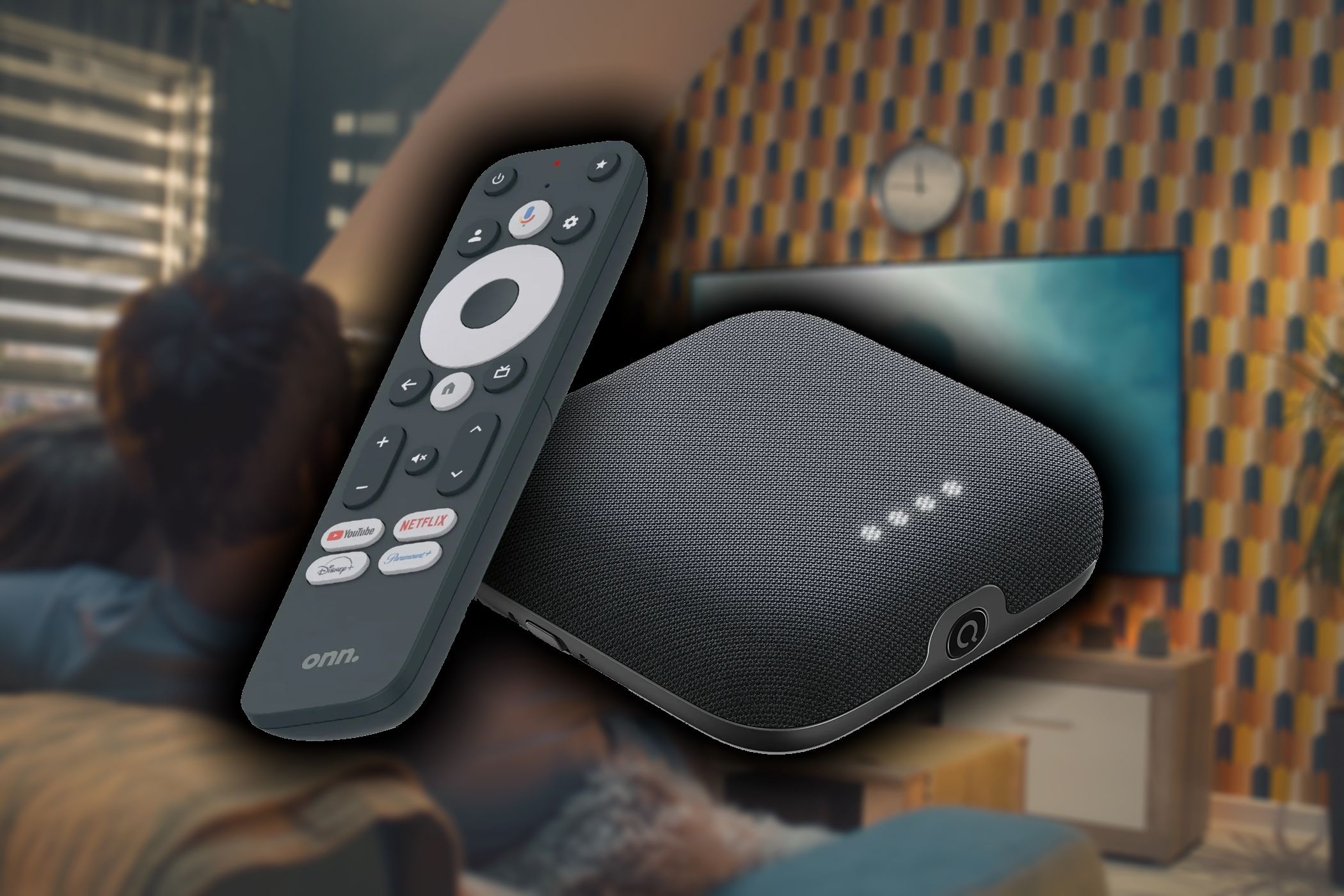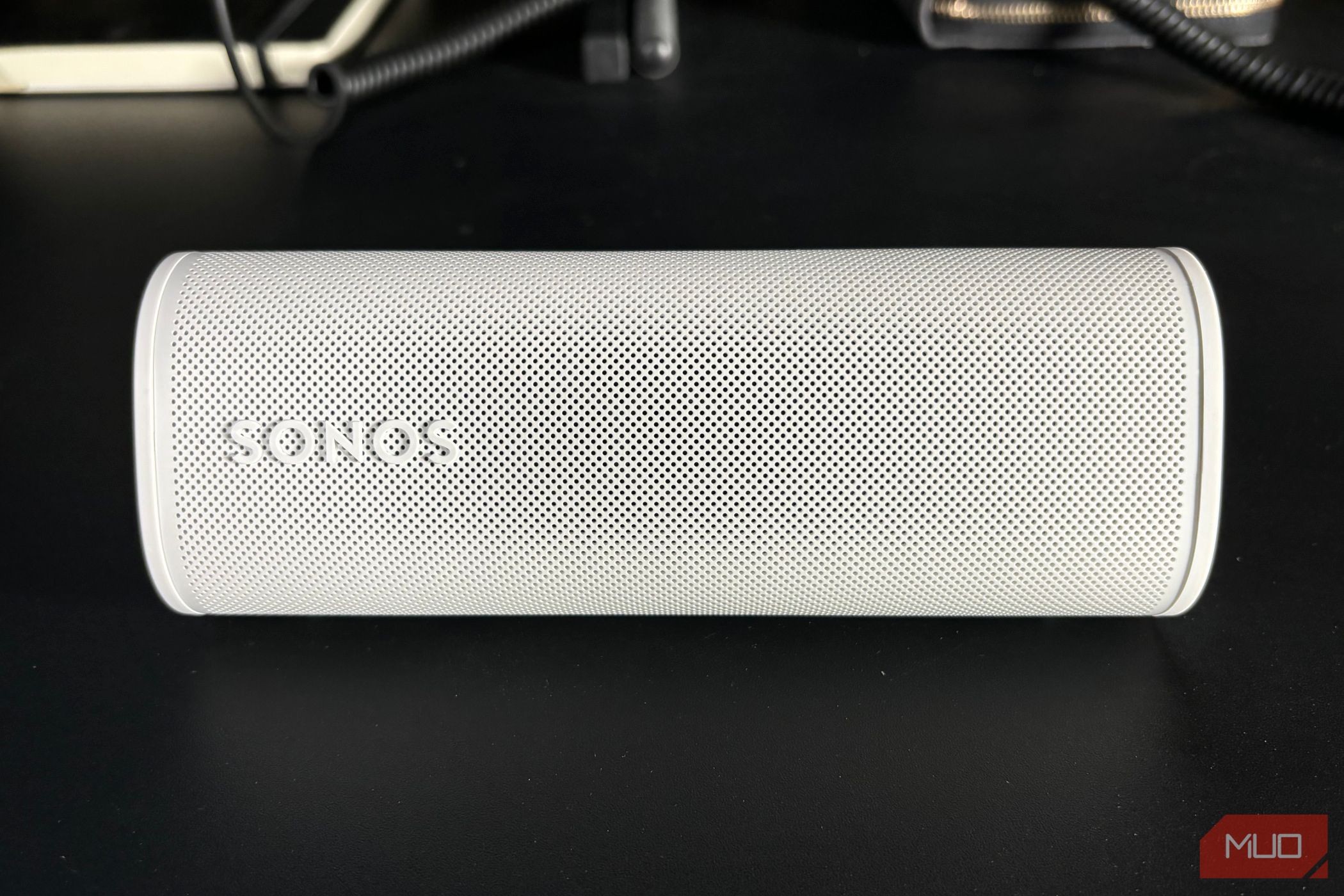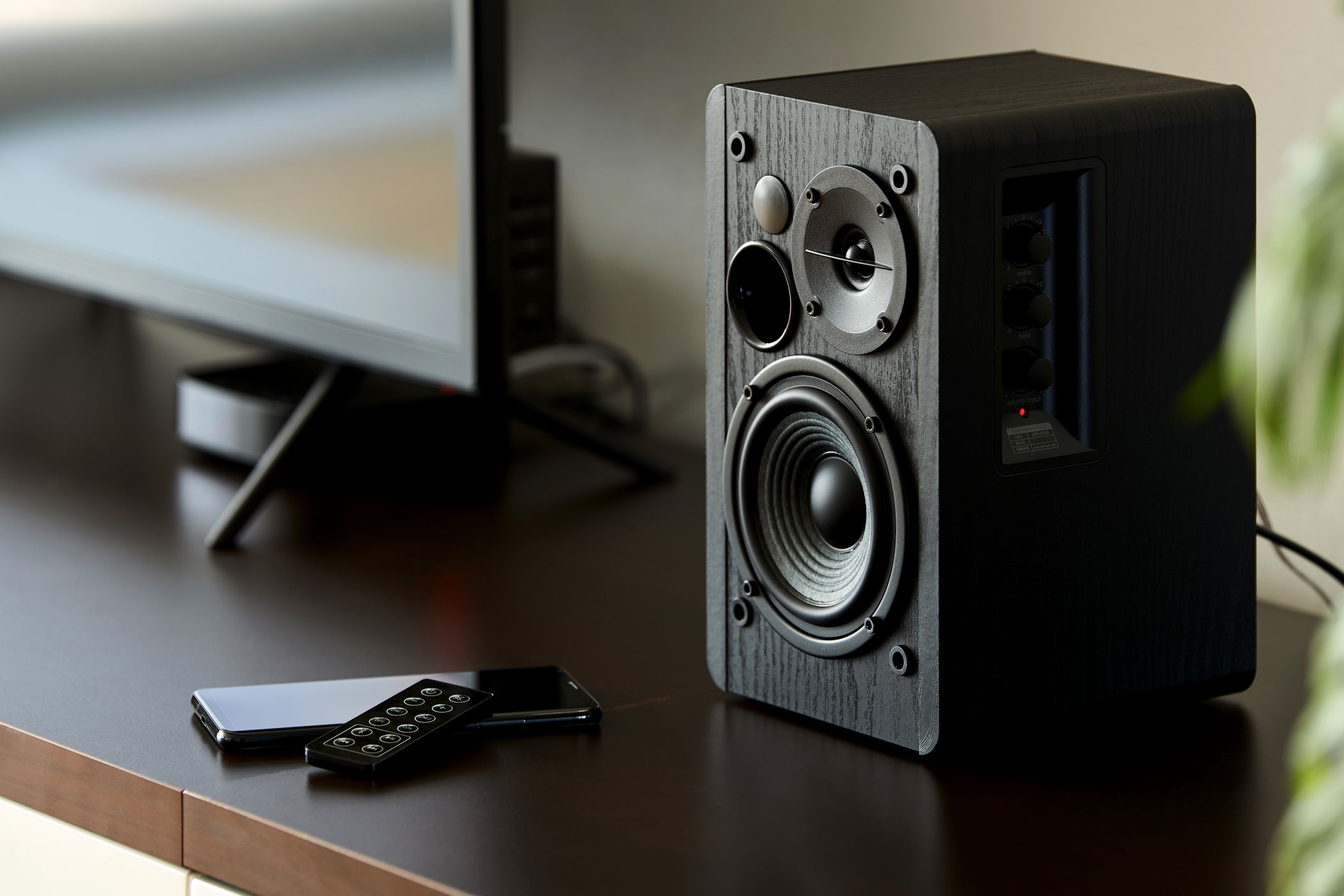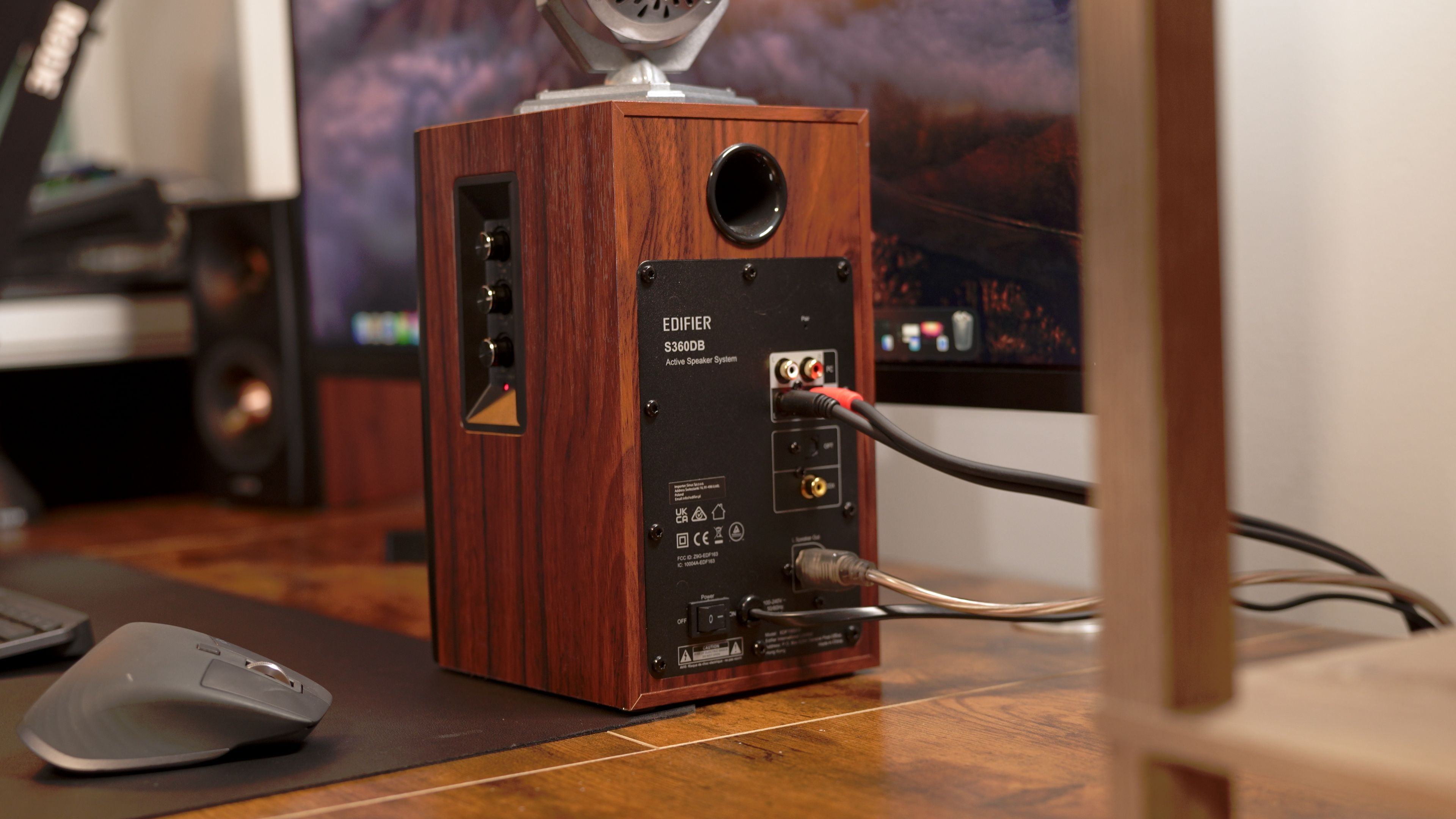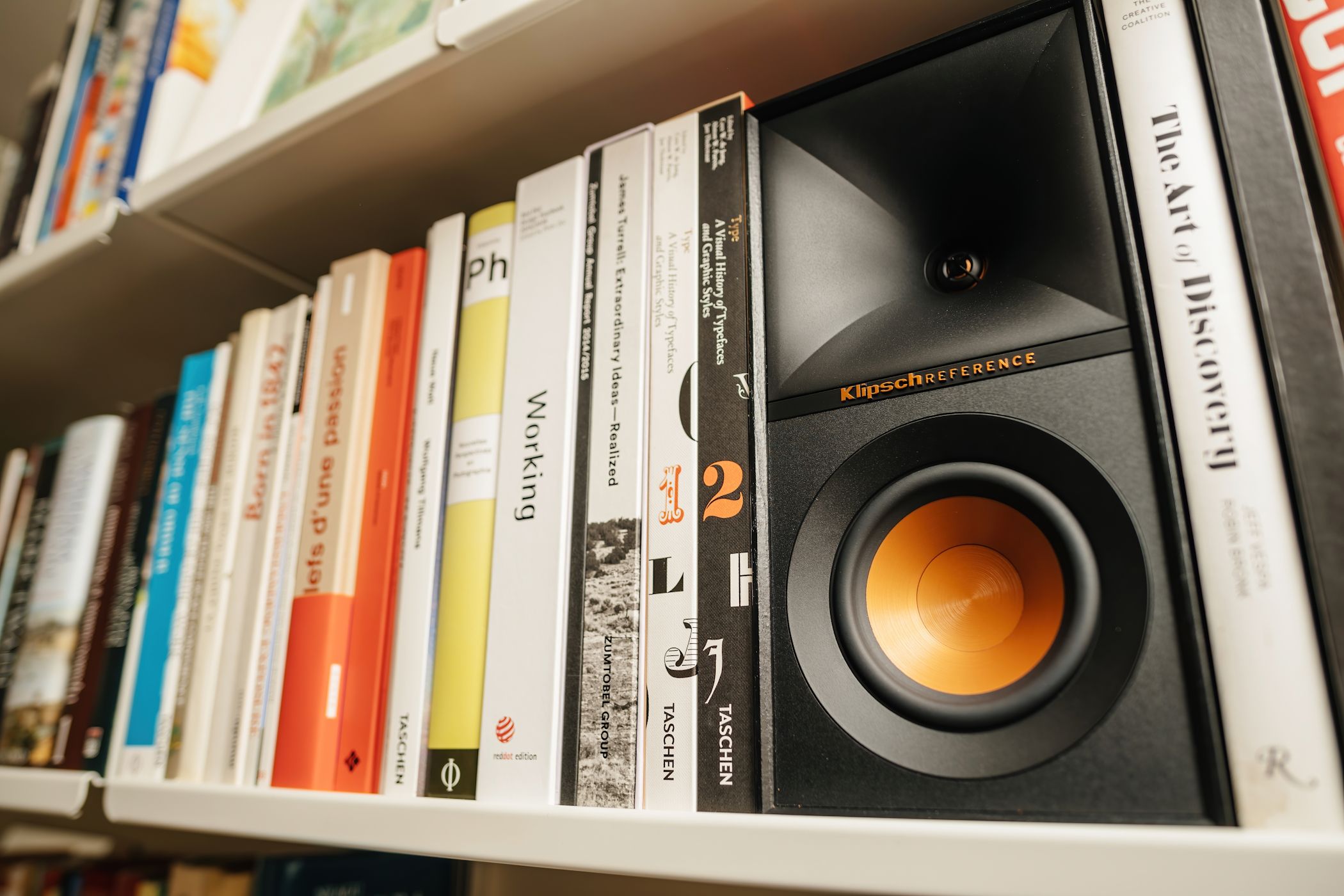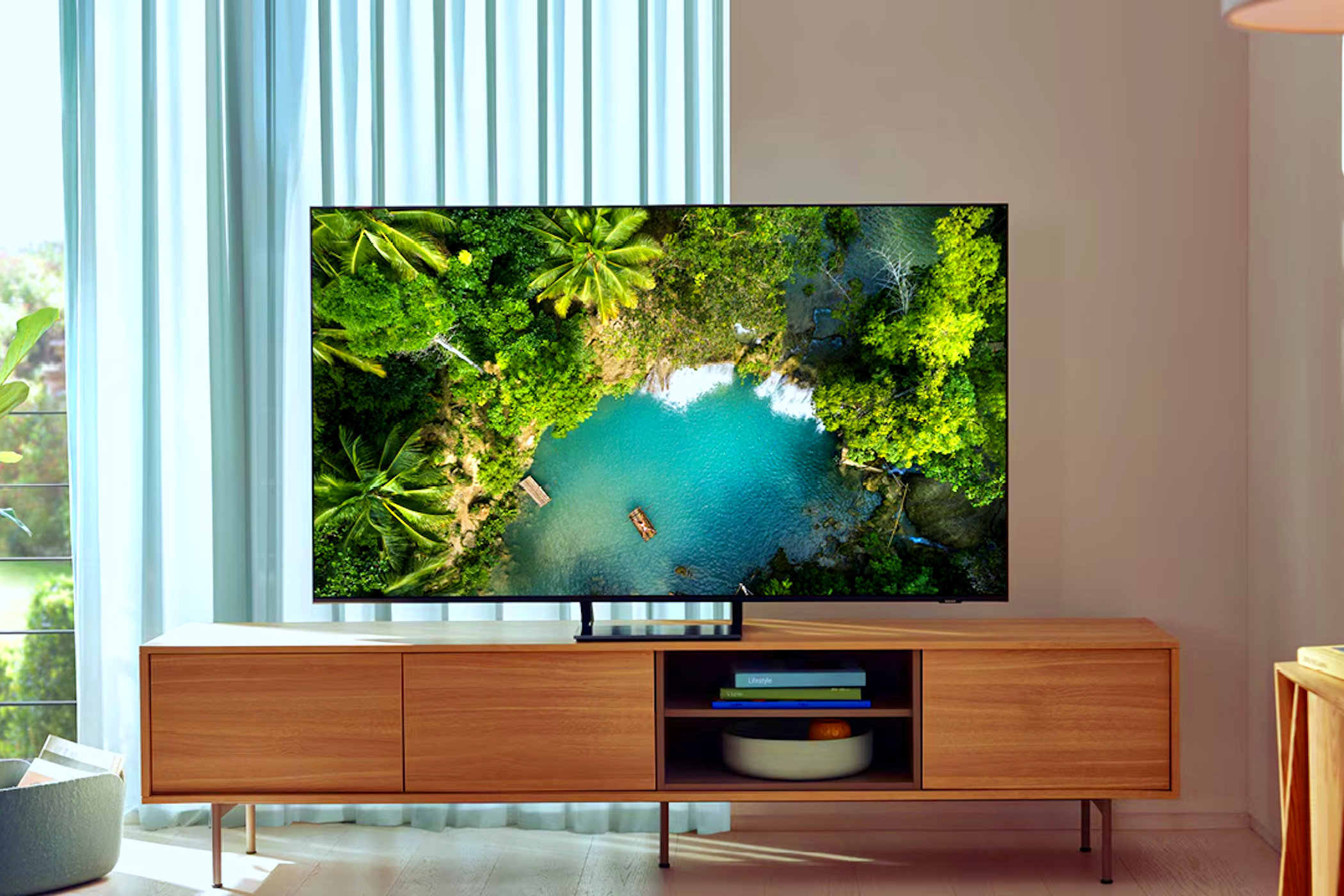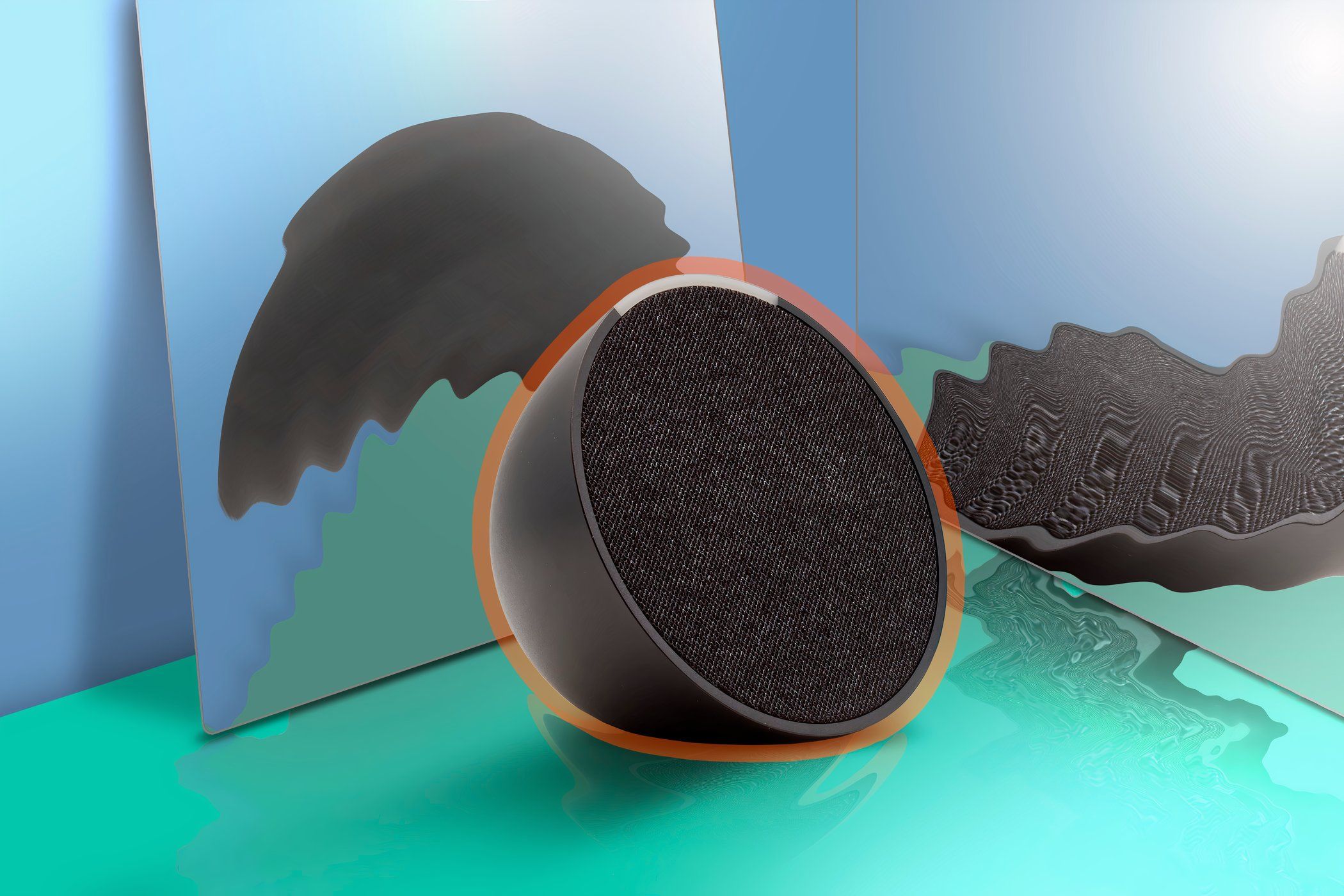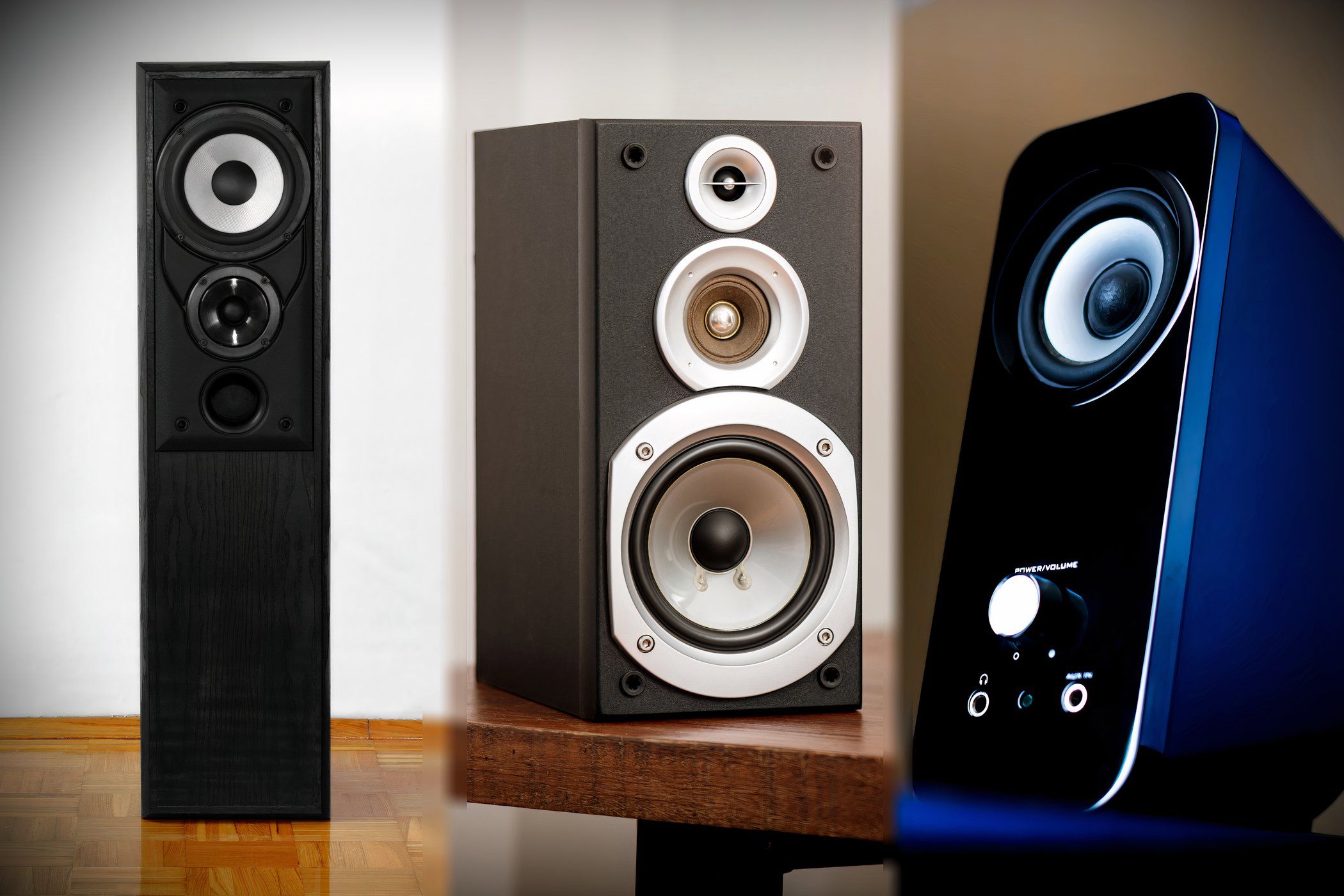
Key Takeaways
- Floor-standing speakers offer the best sound quality due to their large drivers, enclosures, and high power handling.
- Bookshelf speakers rank second in sound quality but lack powerful bass.
- Desk speakers are compact and low-powered, ideal for personal listening in small spaces.
With so many options, choosing between floor-standing, bookshelf, and desk speakers can be confusing. I’ve spent years using each type, switching between them, and figuring out what works best—so it’s time to decide which speaker is better suited for you.
What Are Bookshelf, Desk, and Floor Standing Speakers?
Before comparing different speaker types, let’s define each speaker.
- Floor Standing/Tower Speakers: Large speakers that stand directly on the floor. These speakers are equipped with dedicated subwoofer, woofer, and tweeter drivers providing crisp and well-defined signals for all kinds of music and audio.
- Bookshelf speakers: Compact speakers are designed to fit on shelves, stands, and other elevated surfaces. They use both woofer and tweeter speaker drivers, providing a wide range of audio signals. They are often combined with a separate subwoofer to generate low-frequency sound and make a full-range audio setup.
- Desk speakers: Even smaller than bookshelf speakers, typically used with computers or in compact spaces like bedrooms and offices. They are designed to sit on desks and provide close-range sound, ideal for personal listening. Desk speakers often employ the use of a single full-range speaker driver or a woofer and tweeter driver combo.
You’ve probably seen all three in action at various times, as they have specific uses and provide audio that suits specific room sizes.
Sound Quality and Performance
Sound quality and performance are some of the biggest considerations when buying a speaker. Due to the fundamental physics of how speakers work, you can typically get a rough estimate of how well a speaker will perform based on three factors:
- Speaker driver: The speaker driver is the core component responsible for producing sound. It does so by converting electrical signals into audible sound waves. Speaker drivers such as a tweeter, midrange driver, and woofer are different types of drivers specializing in reproducing certain audio frequencies. Integrating different speaker drivers allows a speaker to produce cleaner audio at different frequencies and higher volumes.
- Enclosure: The size and design of the speaker enclosure/cabinet play a significant role in the speaker’s sound characteristics. Larger enclosures can accommodate bigger drivers and typically produce deeper bass. Bigger enclosures can also have more effective transmission lines, affecting the audio’s clarity and resonance.
- Power: A speaker’s power rating, often measured in watts, indicates how much electrical power it can handle. Higher power ratings generally allow louder volumes without distortion when combined with efficient, high-quality components. Speakers draw power from amplifiers, which can be active or passive. An active speaker often provides better sound and can support more power, while passive speakers are cheaper to produce.
Now, let’s compare the performance of each type of speaker based on its driver, enclosure, and power.
Here is a table that compares floor standing, bookshelf, and desk speakers using standard configurations:
|
Speaker Type |
Floor Standing Speaker |
Bookshelf Speaker |
Desk Speaker |
|---|---|---|---|
|
Speaker drivers |
Tweeter, midrange, and woofer (range 40-30,000Hz audio frequencies) |
Tweeter, mid-range (range 2,000-30,000Hz audio frequencies) |
Low-power mid-range and tweeter combo (range 500-30,000Hz audio frequencies) |
|
Enclosure |
Large |
Medium |
Small |
|
Power |
High |
Medium |
Low |
Based on the definitions and the table above, floor-standing speakers offer the best sound quality and loudness due to their large dedicated drivers, spacious enclosures with effective transmission lines, and higher power handling. Bookshelf speakers rank second in terms of sound quality, mostly due to their inability to produce deep, powerful bass. Desk speakers rank last due to their limited capability of producing quality audio at higher volumes.
Setup and Space Requirements
The setup and space requirements vary significantly among these speakers.
Floor-standing speakers need a lot of room because they are quite large, often standing three to four feet tall and about a foot wide. They work best in bigger rooms with plenty of space to stand freely without crowding the area. These speakers are heavy, so once you find a spot for them, you’ll probably want to keep them there.
Bookshelf speakers are more compact than floor-standing speakers. They’re usually about a foot tall and wide, making them easier to place in smaller spaces. You can put them on shelves, stands, or other elevated surfaces. However, if you plan to place them on shelves, you will need a front-ported bookshelf speaker so the bass hole won’t get blocked on the sides or back.
Desk speakers are the smallest and most compact option. They are designed to sit on a desk or small table, making them perfect for personal use in small rooms or offices. These speakers are easy to set up and don’t take up much space, so they’re great for places where you might not have a lot of room to spare.
Connectivity and Features
Connectivity and features may vary among the different types of speakers.
Floor-standing speakers usually have more advanced connectivity options, including wired connections such as RCA, binding posts, and XLR and wireless connections like Bluetooth/Wi-Fi. They might also have special features like bi-amping, which allows for separate amplification of the high and low frequencies, which can help with even more audio clarity at higher volumes.
Bookshelf speakers typically use RCA, 3.5mm jack, and spring clip connectors for wired connections and Bluetooth/Wi-Fi for wireless connection. Bookshelf speakers are often used in various types of surround sound setups because of their compact enclosures, ideal drivers, and easy connectivity to other devices.
Desk speakers are generally straightforward and user-friendly, with simple connectivity options like USB, 3.5mm headphone jack, or Bluetooth, designed for quick and easy plug-and-play use. Some desk speakers can also have smart features, such as a voice assistant, smart home integration, and touch control. Integrated batteries are also popular features that allow desk speakers to be portable.
Cost Considerations
Floor-standing speakers are the most expensive, costing $300 – $2,000+ due to their large size and high-performance capabilities. However, they are pretty good options for future-proofing your setup as they are already well-rounded speakers that don’t need extra add-ons to provide good audio.
A bookshelf speaker is less expensive than a floor-standing speaker, typically costing around $100 – $1,000. However, the cost can quickly increase if you buy a stand to place the speaker, a separate subwoofer for better audio immersion, or even a few more bookshelf speakers for a surround sound setup.
Desk speakers will be the least expensive, with an average price range of ($30 – $500), since they are small, equipped with low-powered components, and typically only for personal use. However, some desk speakers, especially those with batteries and smart features, can be expensive.
Floor Standing vs. Bookshelf vs. Desk Speakers
Here’s a table to easily compare floor standing, bookshelf, and desk speakers based on sound quality, setup and space requirements, connectivity, and price.
|
Feature |
Floor Standing Speakers |
Bookshelf Speakers |
Desk Speakers |
|---|---|---|---|
|
Sound Quality |
Powerful, immersive |
Balanced, versatile |
Clear, detailed |
|
Setup Complexity |
Moderate |
Moderate to complex |
Easy |
|
Space Requirements |
Large |
Medium/flexible |
Minimal |
|
Connectivity |
RCA, binding posts, XLR, Bluetooth/Wi-Fi |
RCA, 3.5mm jack, spring clip, Bluetooth, Wi-Fi |
USB,3.5mm headphone jack, Bluetooth, Wi-Fi |
|
Standard Price Range |
$300 – $2,000+ |
$100 – $1,000+ |
$30 – $500 |
Which Speaker Type Is Right for You?
Choosing the right speaker type depends on your specific needs and preferences.
If you have the space for a well-rounded speaker that delivers an immersive audio experience, floor-standing speakers are an excellent choice. They offer powerful sound and are perfect for high-fidelity music setups.
Bookshelf speakers are ideal for those who want good sound quality in a compact form factor. They are versatile and can be easily integrated into various setups, making them suitable for apartments, offices, or smaller living rooms.
Finally, desk speakers are best suited for small, confined spaces such as small to medium-sized bedrooms. They provide good sound quality while taking up minimal space, perfect for personal listening areas or desktop setups.

